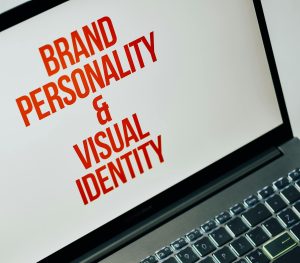Strategies to Enhance Customer Engagement: Overcoming Ratio Bias in Promotional Events

My friend works in a consumer goods company, specializing in promotions. Once, she organized an event where customers could exchange points for a chance to smash golden eggs and win prizes. Among the ten golden eggs, one contained the latest Bluetooth headphones. Despite attracting some participants, the turnout was less than expected. With a limited budget and an inability to increase prizes, she needed to maintain the same winning ratio to attract more customers. What to do?
To address this “what to do” question, we must first understand the essence of the problem. The core issue is how to make the same probability appear larger in the minds of customers. To achieve this, we delve into the concept of “ratio bias,”.
Concept of Ratio Bias
As previously discussed, users tend to find a $20 item discounted by $10 more attractive than a $300 item discounted by $30. Although the latter is a more significant actual discount, the former appears more enticing as it represents a 50% reduction compared to the 10% discount of the latter. This psychological phenomenon, where a 50% reduction seems more significant than a 10% reduction, is known as “ratio bias.”
Moving from foundational knowledge to practical application, we need a deeper understanding of the various nuances of this psychological phenomenon and its practical implications in business.
Consider this scenario: two boxes, one small with 20 cookies, including one chocolate cookie, and the other larger with 200 cookies, including ten chocolate cookies. If you want a chocolate cookie, from which box would you choose? Congratulations! Like most people, you exhibit “ratio bias.” Although both boxes offer a 1/20 probability of obtaining a chocolate cookie, the perceived probability seems greater when choosing from the larger box.
This demonstration of choosing 10/200 over 1/20, even when the actual probability is the same, exemplifies another facet of “ratio bias.” It is an explicit bias where 50% appears more favorable than 10%, and an implicit bias where 10/200 seems more significant than 1/20.
To explore this implicit bias further, Denes-Raj and Epstein conducted an extreme experiment in 1994. Transparent containers held red and white beads, with containers having fewer beads having a 10% red bead ratio and those with more beads having a 5%-9% red bead ratio. Participants were asked to choose a container to win a prize for picking a red bead. Which container would you choose?
Surprisingly, 82% of participants chose the container with more beads, even though the actual probability of winning was lower. This behavior, driven by implicit “ratio bias,” reveals how individuals, under the influence of this bias, may disregard lower ratios in favor of containers with more items.
This irrational preference for larger containers and quantities highlights the intriguing aspects of “ratio bias.”
So, what should my friend do? She could increase the number of golden eggs from 10 to 100 and the Bluetooth headphones from 1 to 10. This means that the winning probability changes from 1/10 to 10/100. Wow, now there are 10 chances out of 100 to win! Alternatively, she could keep 1 headphone in 100 golden eggs but allow users to smash 10 times. While the winning probability remains 1/10, it transforms into 10/100. The joy of participating ten times creates an additional layer of excitement.
Application
How can this versatile “ratio bias” psychology address other “what to do” problems in the business world?
As a doctor, I want people to understand that a prevalent disease has a prevalence rate of 1.35%. How to make it seem more severe? You can use the “implicit” aspect of “ratio bias” by modifying the expression of a 1.35% prevalence rate to 13.5‰ or one in a thousand thirty-five, emphasizing the actual severity of the ratio.
As an e-commerce seller of DSLR cameras, how do I make users feel that my cameras are a great value? You can leverage the “explicit” aspect of “ratio bias” by offering promotions like buy one, get three, buy one, get six, or even buy one, get twenty-five. Buying one DSLR camera and receiving twenty-five accessories, such as lens cloths, UV filters, camera bags, SD cards, and card readers, creates a perceived value that is 25 times greater, generating a significant sense of worth for the users.
Key Takeaways
In conclusion, “explicit” “ratio bias” is the perception that a 50% discount is more appealing than a 10% discount and that buy one, get twenty-five is more cost-effective than buy one, get three. On the other hand, “implicit” “ratio bias” is the tendency to choose 10/200 over 1/20, or 13.5‰ over 1.35%, despite similar actual probabilities.
Humans, unlike machines, often confuse relative sizes with actual sizes. Are you one of the rare individuals who can see through these biases?





